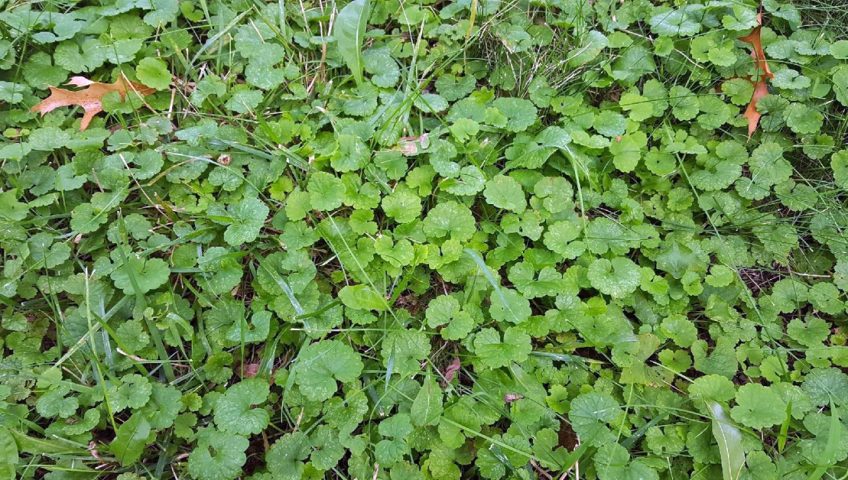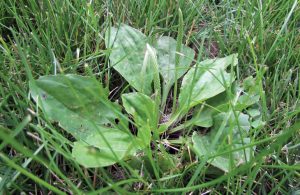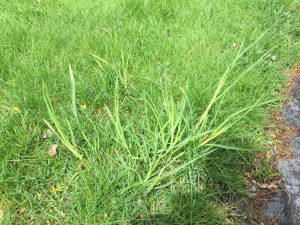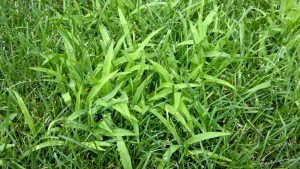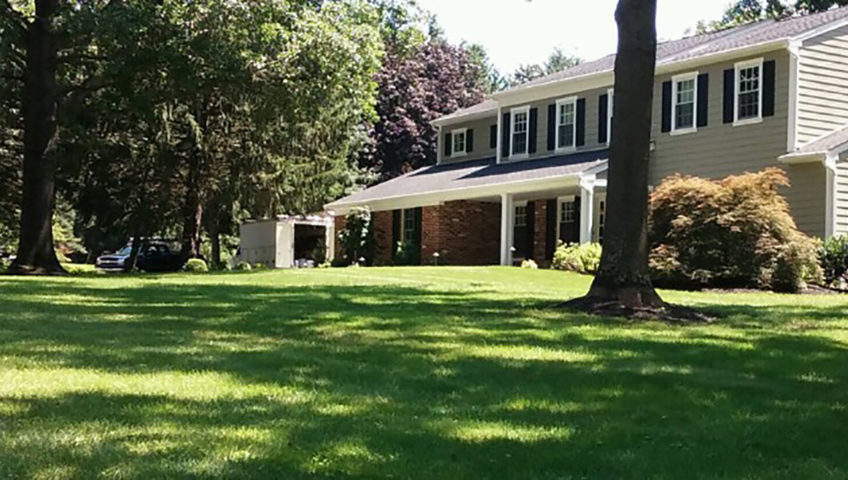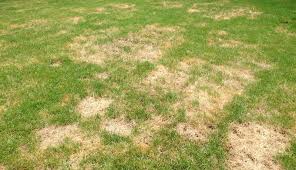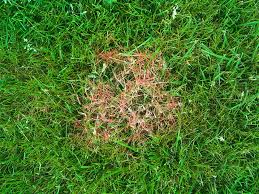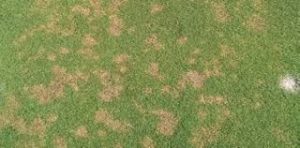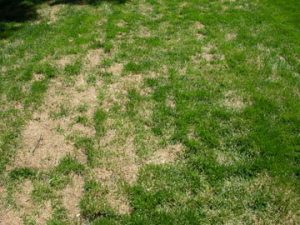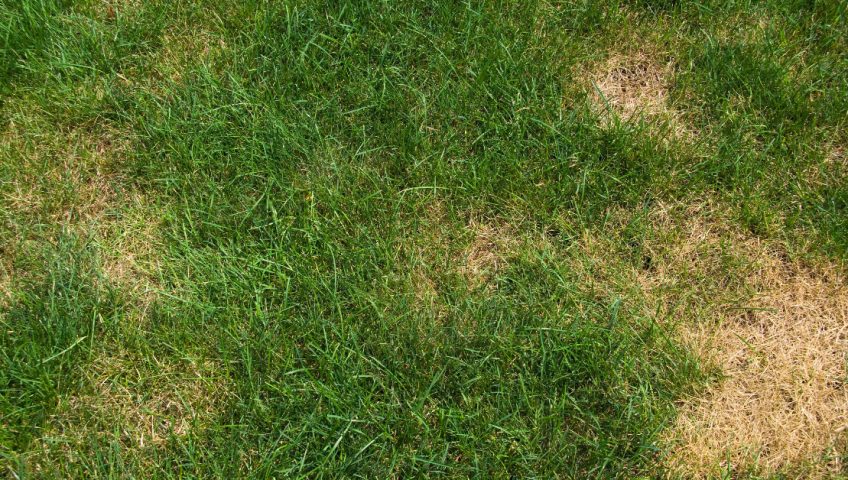
Common Types of Lawn Fungus
Are brown patches starting to pop up in your yard? You could be dealing with one of many types of lawn fungus that naturally occur in your lawn. Your lawn naturally contains millions of fungi spores, many of which never cause problems. However, things like long rainy seasons, over watering, too many cloud days, droughts, and subpar lawn care can cause the fungi can spread out of control.
What Does Lawn Fungus Look Like?
Lawn fungus, which can sometimes be misidentified as weeds, appears in a variety of shapes and sizes.
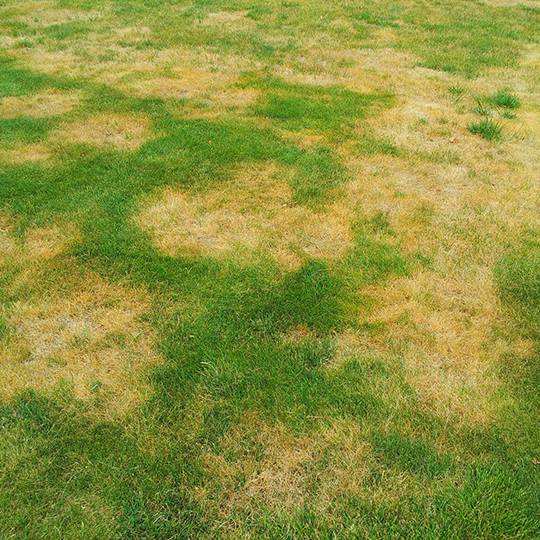
Summer Patch
Symptoms of summer patch include rings and circular patches of dead or dying turf grass. Most likely there is a center or surrounding area of healthy grass in or around what we call a doughnut style patch. Therefore, allowing those dead spots to become full of many forms of weeds. You may see this during mid-summer, after heavy rainfall or consistent rain.
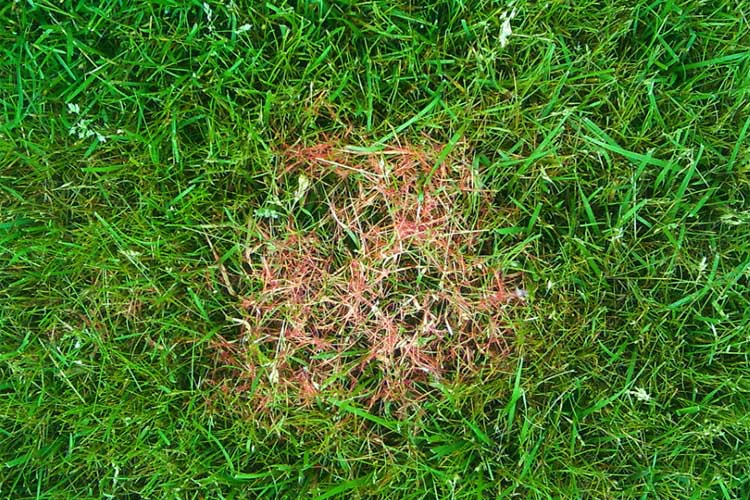
Red Thread
The symptoms and signs of red thread are distinctive, most common among morning dew, water from rain or irrigation issues. A coral pink or reddish layer of fungal growth knows as mycelium can be seen on leaves and sheaths. Development of this type of disease is prompted by cool, wet weather (65-70 degrees). The most obvious times you may see this is in the spring or early autumn. As most fungus Red Thread can be seen during long wet weather and damp lawns.
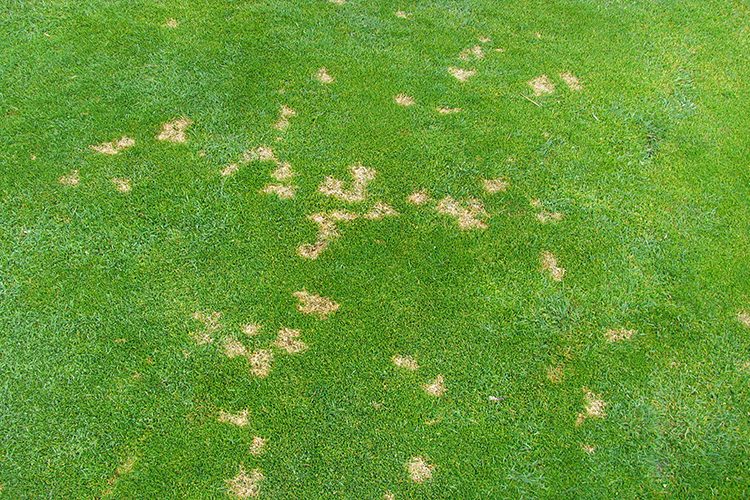
Dollar Spot
Long periods of high humidity or frequent rainfall may cause the most severe outbreaks. Watering your lawn at the wrong time may extend or increase the incidence of disease. Therefore, the most common outbreaks occur when temperatures are moderately warm and change rapidly. Such as warm days turn into cold nights. Infected areas 4 inches or larger may run together, allowing for much larger patches. Although, patches growing to 12 feet wide are not uncommon.
Lawn Care Tips for Preventing Lawn Fungus
Don't Cut Your Grass Too Short
Not only does it help to prevent weeds from growing, but cutting no more than one third of the length of your grass off keeps it strong and healthy. Cutting your grass too short weakens the grass, which increases the risk of a fungal disease.
Hire a Reputable Lawn Care Company
Keeping your yard healthy requires regular lawn maintenance. It’s essential your lawn care company is well aware of the types of fungal diseases that are common in your area. For over 35 years, we have kept our community's’ yards beautiful and healthy in Bucks County and the surrounding areas. Over that time, we have learned what to anticipate throughout the year and our lawn care plans reflect that!
Apply Only as Much Fertilizer as you Need
Giving your grass the nutrients it needs is key to promoting a strong root system. However, applying too much or too little fertilizer stresses the grass. A strong, healthy lawn is the best defense against fungal diseases.
Get Rid of Dead Grass
Dead grass can build up in the soil over time, which chokes out healthy grass blades and increases the risk of developing a fungal disease. Using a dethatching rake, you can remove the dead grass. However, it is time consuming process. If your yard is big, you might want to rent a power detatching rake or purchase a dethatching attachment available for some types of riding mowers.
Sharpen the Blades of Your Lawn Mower
Your lawn mower blades should be sharpened in the Spring before the mowing season starts. Dull lawn mower blades tear off the tips of your grass instead of actually cutting them. The resulting frayed grass blades are more likely to develop fungal diseases compared to clean cut, sharp blades of grass.
Quit Worrying About Lawn Fungus!
Our lawn care plans have kept our customers’ yard healthy and beautiful for over 35 years! Our experts will treat your yard to ensure it stays beautiful and disease free year-round! Explore our lawn care programs or call us today today and see why the grass is always greener at Bluegrass Lawn Service!
Get the latest tips to keeping a healthy lawn on our Facebook Page!
